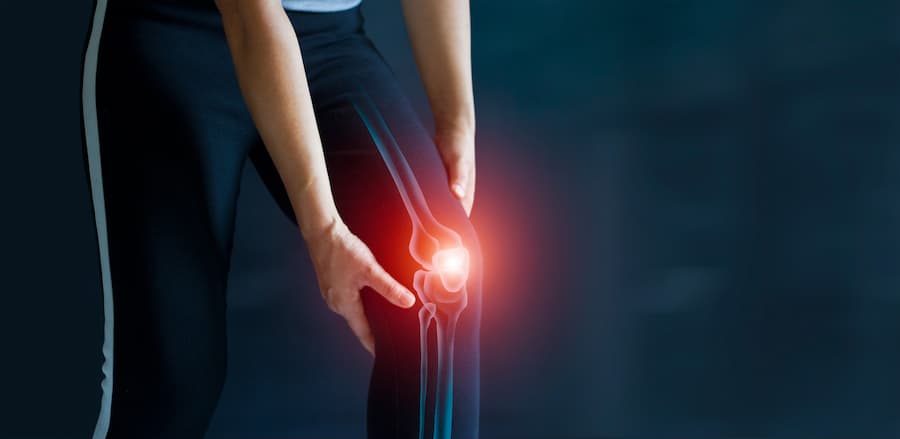
Nothing feels as good as getting a good workout, but just one little mistake and injury can turn that mood around. One common injury that runners can have is runner’s knee or patellofemoral pain syndrome (PFPS). Runner’s knee is a broad term that we use to refer to any one of several conditions causing pain around the kneecap (patella). Conditions that fall under runner’s knee include chondromalacia patella, anterior knee pain syndrome, and patellofemoral malalignment.
So what causes Runner's knee and how do you treat it? Runner’s knee is essentially caused by vigorous physical activities like jogging and climbing can put repeated stress on the knee. Other causes could be foot problems and unbalanced thigh muscles, among others. One can treat Runner’s knee by resting and applying ice, among other home treatments. However, it’s best to consult a doctor who can suggest the best treatment for you.
Runner’s knee isn’t exclusive to runners. It’s also not a specific injury as it’s a broad term used to refer to one’s pain from one of several knee problems.
There are many causes of runner’s knee, and these include:
Overall, runner’s knee or patellofemoral pain syndrome can be caused by vigorous physical activities. These activities, such as squatting, climbing, and jogging, put repeated stress on the knee and cause runner’s knee. A sudden change in one’s physical activity can also lead to this injury.
One indicator of Runner’s knee is dull, aching pain around or behind your kneecap (patella). You may also feel pain while walking, using the stairs, kneeling, squatting, running, sitting, and standing up. Swelling, popping, or grinding in the knee are also some clear signs.
Other Runner’s knee symptoms include:
Always make note that these symptoms are just quick guides, and the best way to find out if you really have Runner’s knee is to talk to your physical therapist.
Once you are diagnosed with Runner’s knee, reach out to your physical therapist.
Your Physical Therapist will evaluate and create a plan of care to get you back in action.
Some of the treatment may include the following:
Runner’s knee can usually be relieved with physical therapy or simple measures. However, if you don’t adjust your training routine or activity level, it may recur. Below are other additional ways to prevent runner’s knee:
Runner’s knee isn’t the only injury we should be cautious of during physical activity. Below are other possible injuries one can get from running:
If you have IT band syndrome, you’d feel that the pain is quite sharp and isolated to the area above the knee or at the outer area of the knee. While it doesn’t cause redness or swelling, it can affect both experienced and novice runners.
The IT band is a type of soft tissue that runs along the side of the thigh from the pelvis to the knee. As it approaches the knee, it thickens and as it crosses a prominent area of the thigh bone( femur) before t attachest to the tibia. When we bend our knee, the IT band must glide over the outside part of the knee joint. If the IT band ends up becoming tight from overuse, it could rub against the lateral condyle, become inflamed, and cause pain.
This injury can be painful at the front of the knee, at the lower kneecap, or the bony area at the top of the shin. You may just feel the pain when exercising, or you could feel it so much that it affects your daily activities. You may also notice warmth, redness, and swelling.
Signs of osteoarthritis include stiff, achy, and possibly swollen knees. However, experts are debating whether or not regular running will cause this injury. According to some experts, running doesn’t cause knee osteoarthritis, but those who already have this may accelerate the wear-and-tear on the knee joint through regular running.
Our meniscus separates the tibia and the femur and provides stability and cushioning. It can either get damaged from a single traumatic injury or degenerate over time due to mini trauma.
The people who are at greatest risk for meniscus damage are older people, people who run on uneven surfaces, and people who make hard stops and sudden turns.
Below are other areas where athletes can also have injuries. These aren’t as common in runners, but they still need medical attention:
Knee injuries vary from minor to serious, so be sure to take a break from running and consult your doctor if the pain doesn't go away.
When it comes to sports injuries, it’s best to give yourself the best treatment possible. AmeriCare Physical Therapy is the premier source for outpatient physical therapy rehabilitation in New Jersey and can give you the quality treatment you deserve. The goals of our physical therapies include helping you recover from a sports injury, helping you adapt to adapt to a change in your function, and helping you work on balance.
With AmeriCare Physical Therapy’s physical and occupational therapists, you’re sure to be on the road to recovery. Call us now or go to our website to book an appointment.